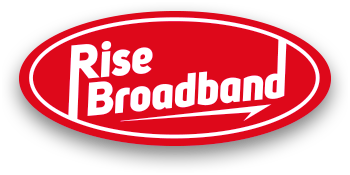
Categories:
Phone:
1-855-715-8745Rise Broadband Internet Service
Rise Broadband is a fixed wireless internet provider that transmits data between a local transmission tower and a receiver dish installed on your home. Rise Broadband is one of the top internet providers for customers in rural communities.
Rise Broadband offers fixed wireless internet service across 18 states to an estimated 16.0 million people, with the greatest coverage in Texas, Utah, and Colorado. Rise Broadband is the 4th-largest residential provider of fixed wireless in the U.S. by coverage area. Rise Broadband also offers digital home phone service and access to fiber internet service in select areas.
Rise Broadband delivers Internet speeds between 3 Mbps and 1 Gbps – comparable to or exceeding DSL, cable, and fiber. Fixed wireless internet can reach speeds up to 1,000 Mbps, but the most common speeds users experience average out around 25 Mbps. Across the board, Fixed Wireless subscribers can expect speeds of at least 10 Mbps download and 1 Mbps upload.If you do get that average of 25 Mbps you’re good for basic internet activity, such as streaming 1080p HD video, loading web pages, and checking email. It can also support two online gaming sessions and almost one 720p Zoom call.
However, larger households and more devices require a faster speed. For example, a 50 Mbps connection allows a few more people to stream in HD or 4K, stream music, game, browse social media, and work from home.
The Federal Communications Commission (FCC) recommends at least 25 Mbps of download speed but on a more realistic level many people live in rural and remote areas where terrain and infrastructure don’t support the types of internet connections where those speeds are routinely achievable. Satellite internet can meet and exceed 25 Mbps but it’s not a guarantee. Most satellite providers offer service plans that promise “up to” speeds that in some cases are up to 150 Mbps. If you can get fixed wireless internet service it’s a great option but it requires a direct line of sight from your home to a tower.
Fixed wireless internet transmits high-speed signals to and from your devices using radio waves, making it a form of broadband. This type of internet connection offers several advantages, including reduced latency and a higher bandwidth. Compared to mobile broadband, fixed wireless signals are generally more stable because they have a limited number of users accessing them simultaneously. Typically, a fixed wireless base station can support around a hundred users, ensuring better control over the traffic volume at any given time.
To establish a fixed wireless connection, a radio antenna is installed, usually on the roof, with a direct line of sight to a nearby wireless tower. This tower is connected to the internet and transmits data directly to your antenna in a straight line. Inside your home, the antenna is connected to a router via a cable, which then enables your devices to access the internet by making the signal readable.
Fixed wireless internet is particularly beneficial in rural areas with relatively even terrain, as it utilizes radio waves to connect you to the internet. It's important to note that fixed wireless is distinct from Wi-Fi. While Wi-Fi signals can pass through or navigate around minor obstacles, fixed wireless relies on a direct point-to-point connection, requiring a clear line of sight between the access point and the reception device.
Fixed wireless internet is designed to be the primary internet connection for a specific area or building. It uses a point-to-point connection from a tower to a receiver, providing a stable and reliable connection. It has low latency so there is a minimal delay in data transmission.
